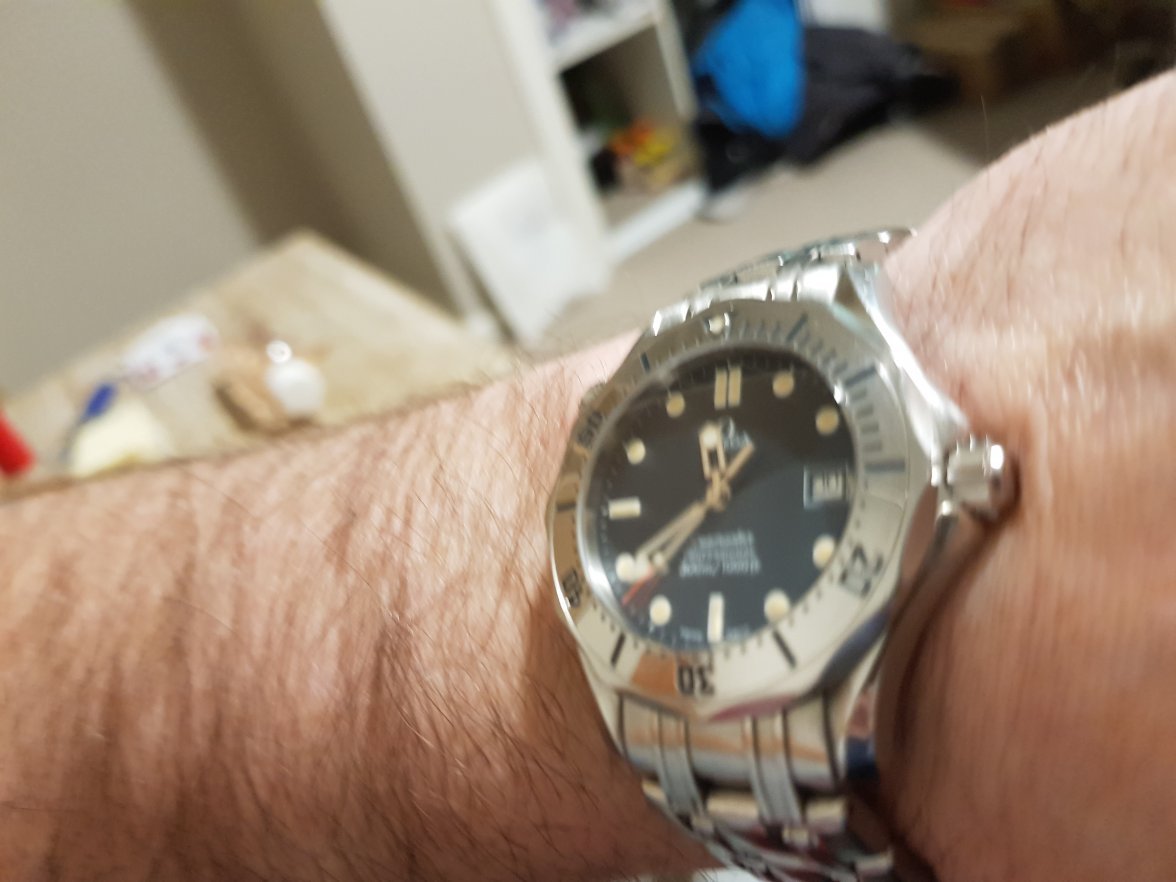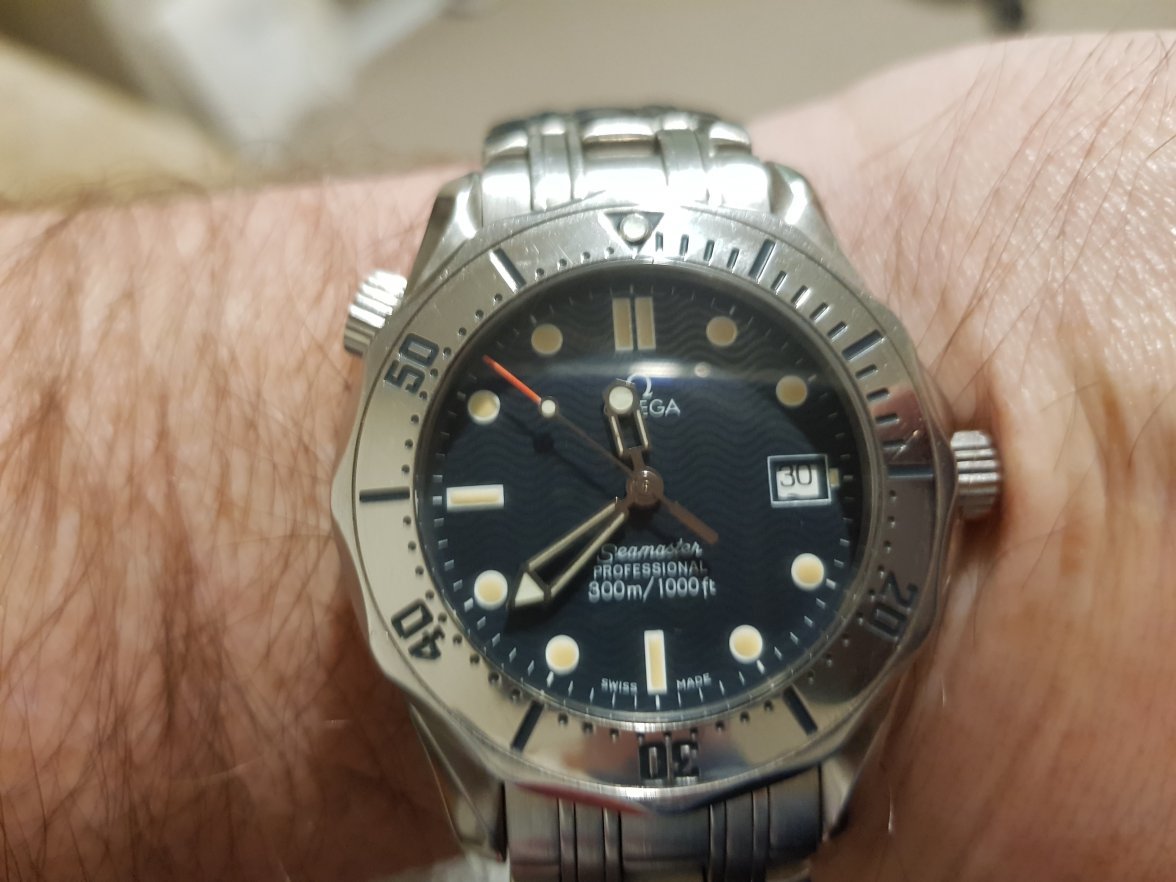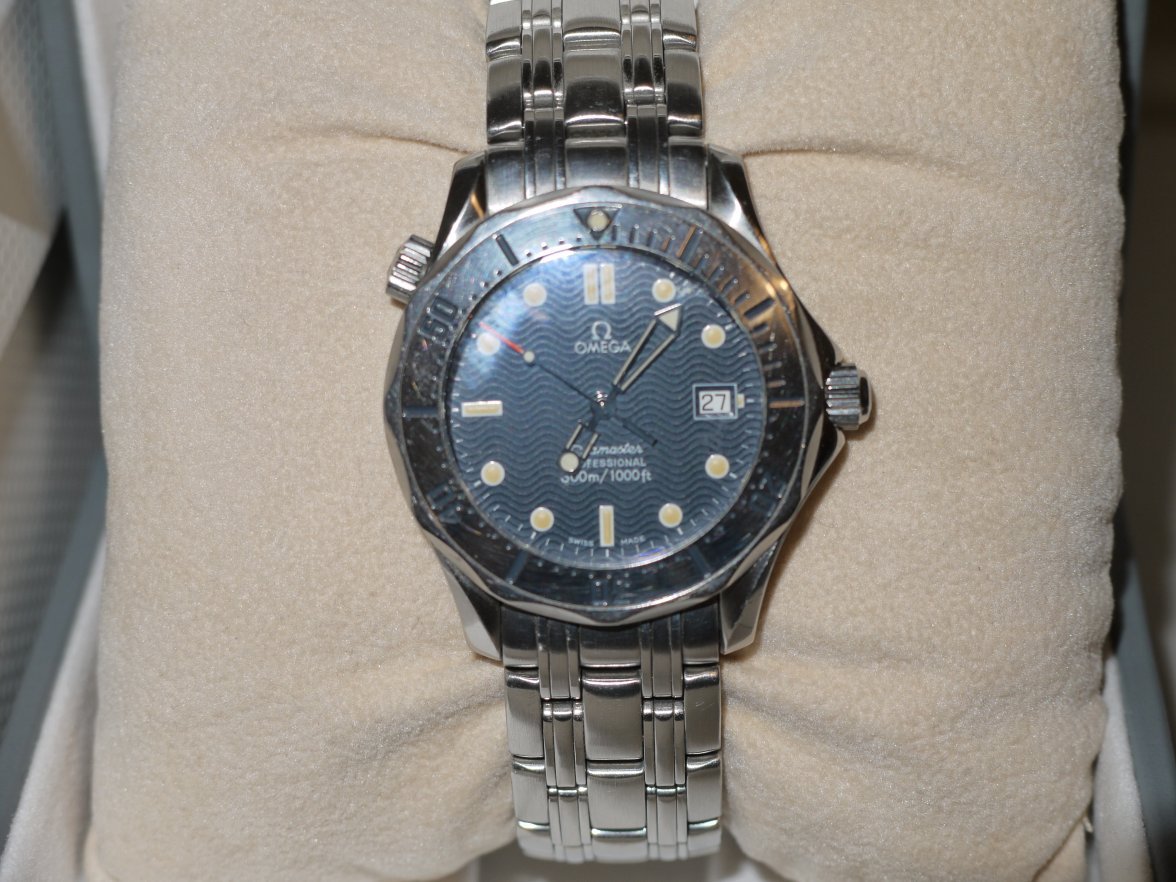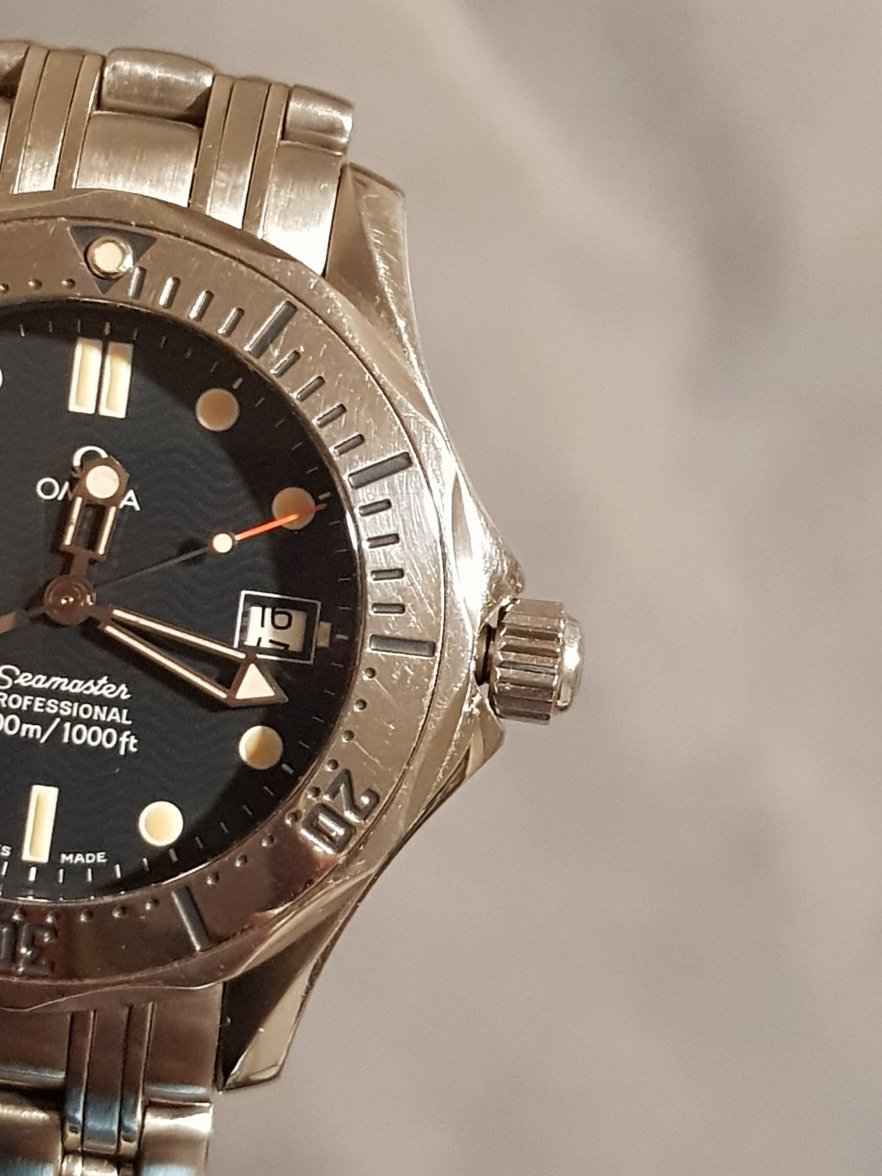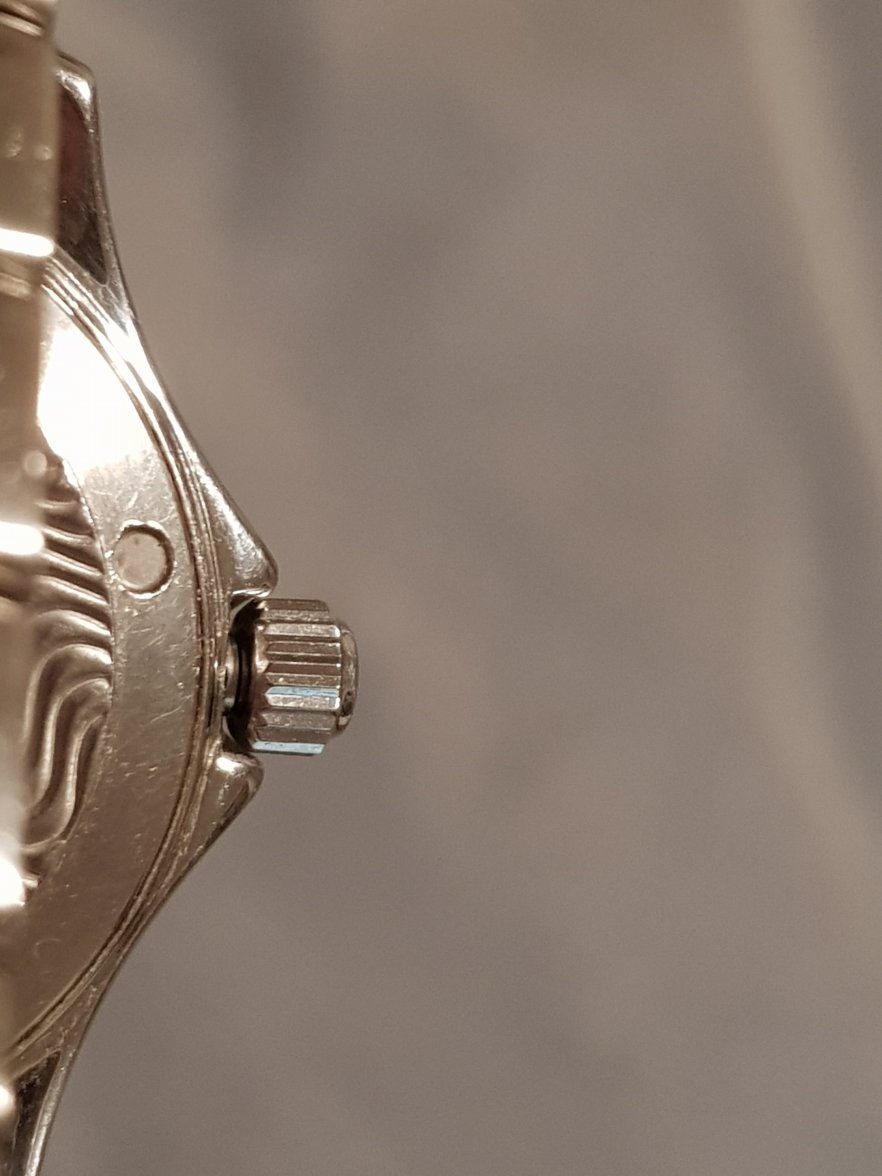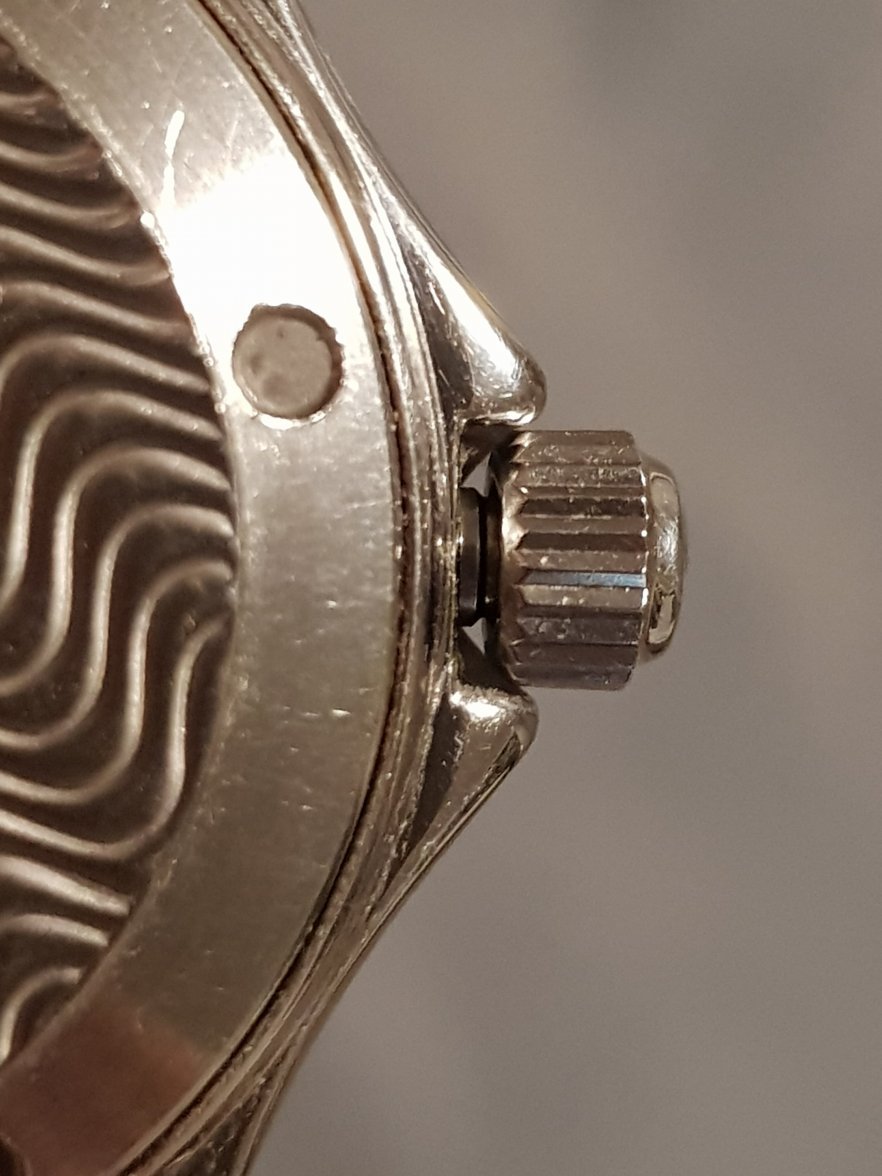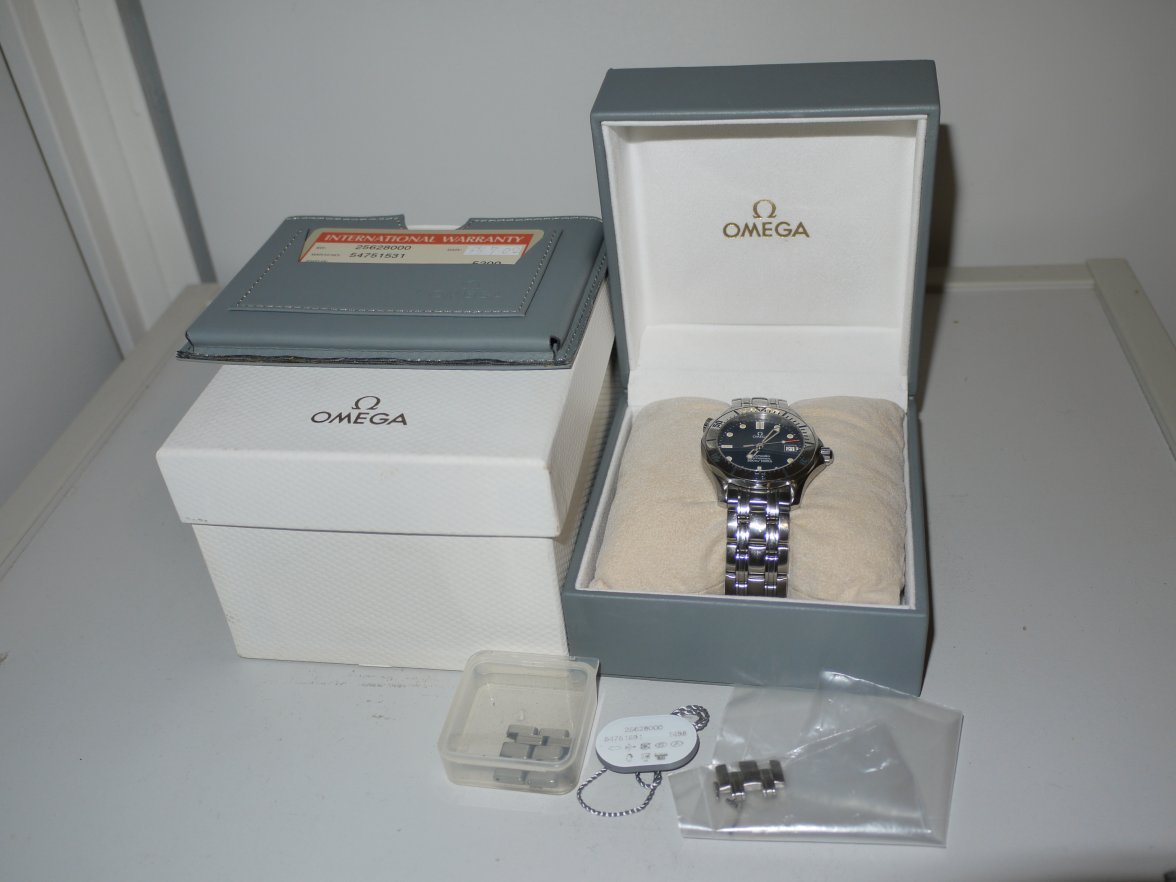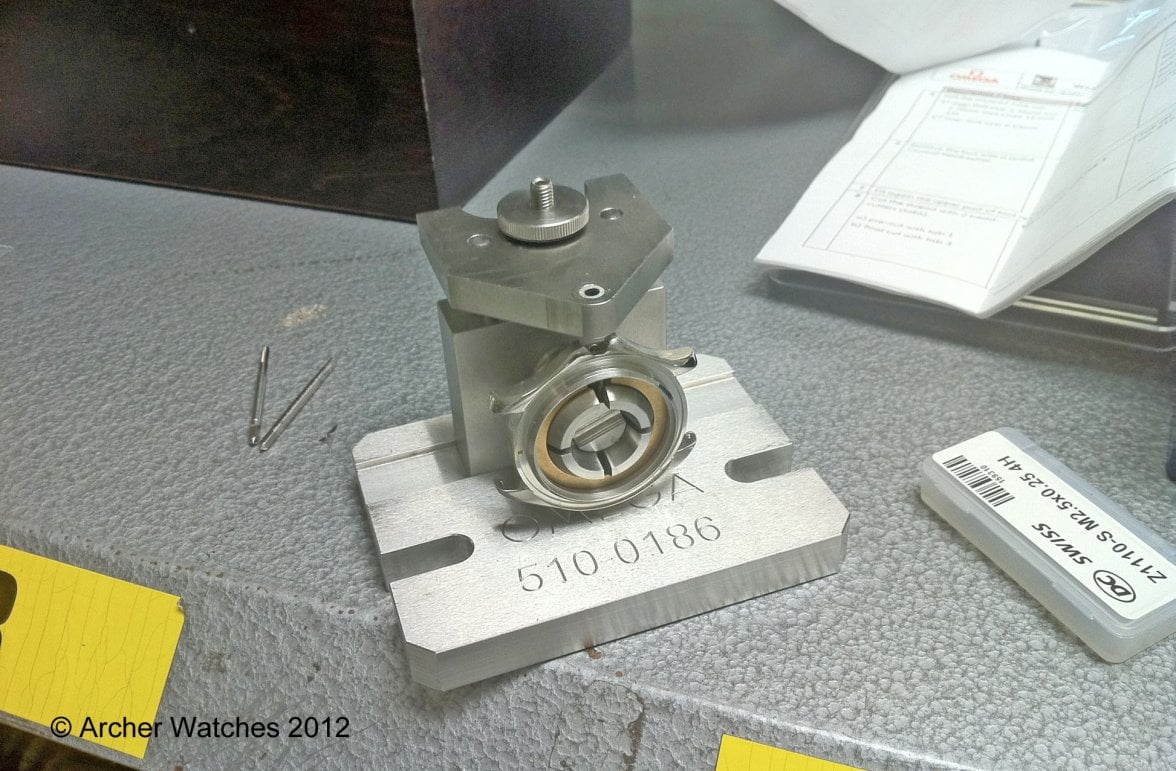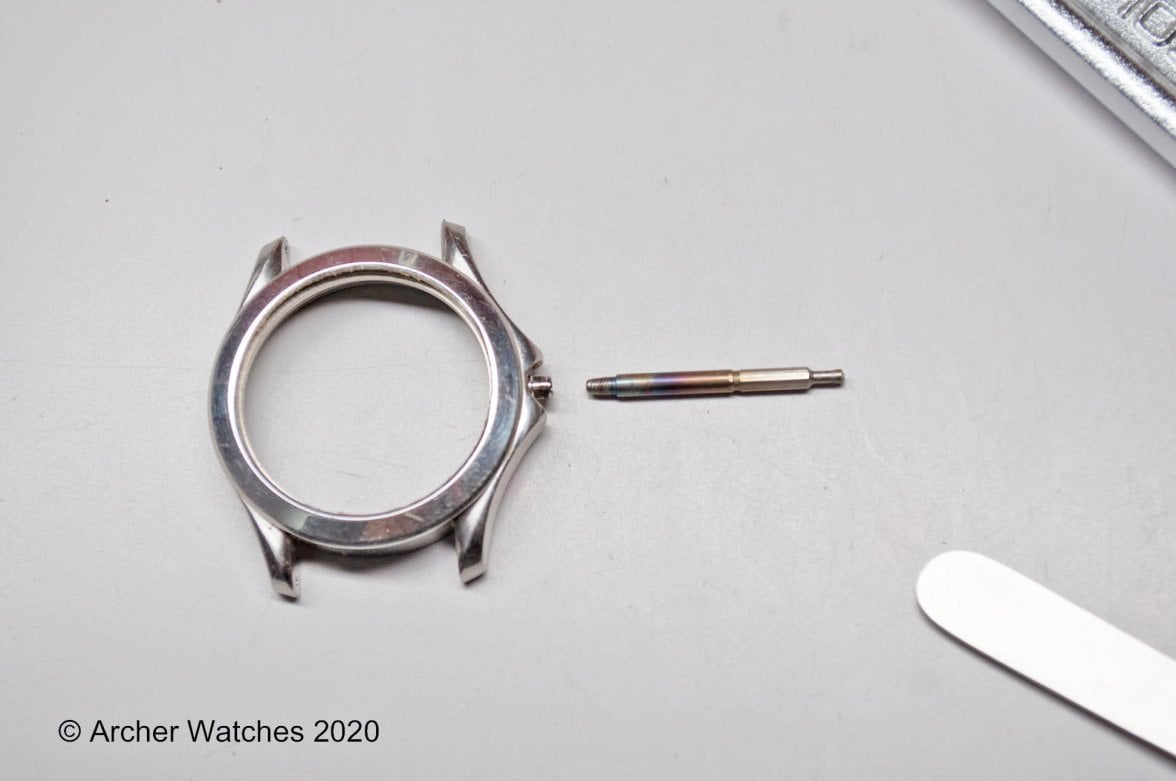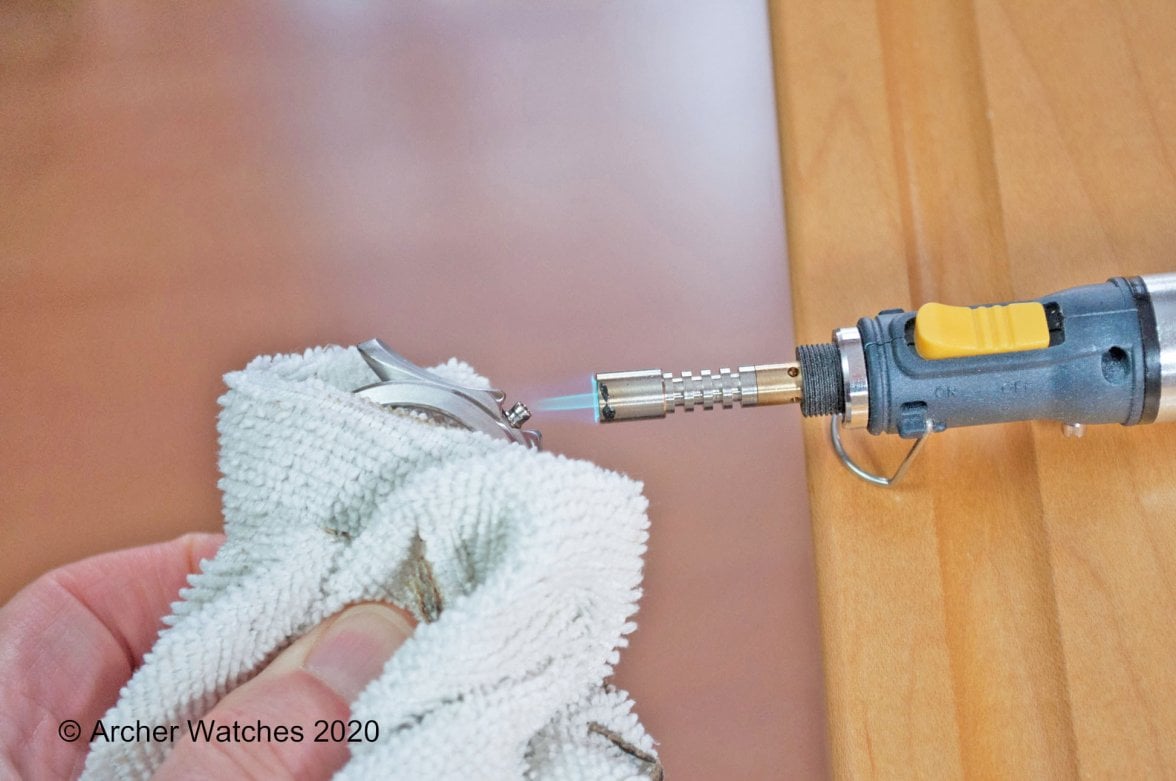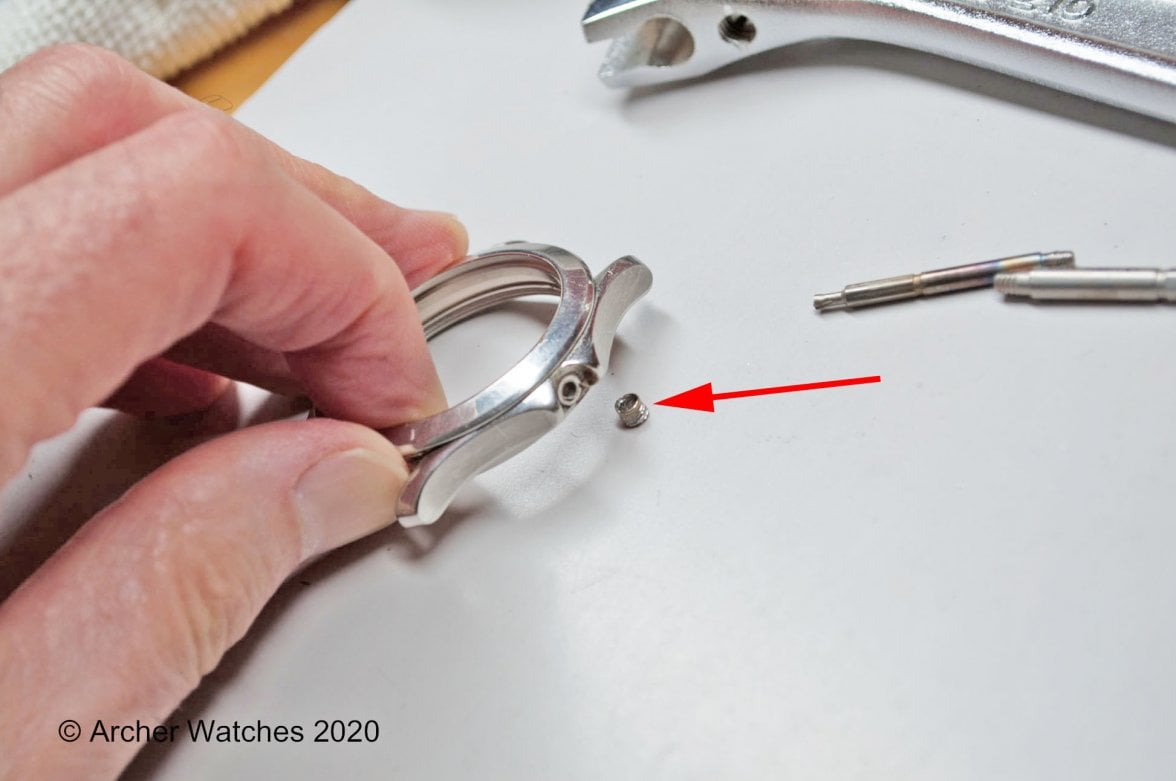https://www.cousinsuk.com/document/gotofiles/8646
Again, that link just takes me to the main page, but I am familiar with the document, and the procedure. I've used the jigs while in training at Omega. I finished the assigned work early on the last day, and the other watchmakers were still busy working, so the instructor asked me what I'd like to do - I told him I wanted to get a feel for drilling out and tapping a case for a new tube using the fixtures, so they took me to the shop, gave me the procedure and a case, and I went to work...
Ready for drilling the old tube out:
In the process of tapping the hole for a new tube:
This is most definitely not a DIY task. The case has to be very accurately located in all directions, and can't move during the process. There are two progressive taps used - trying to do it with just one would result in snapped off taps, so it has to be done in stages. The kit is VERY expensive, so I've never been able to justify the purchase.
I would assume that all smp300 quartz would be the same out of the factory and then retrofitted at a later date.
That assumption isn't correct. Omega changed the style of case tube within models as they made other changes to the cases. They are not all the same for a given model, which is why you need the specific case number, and even then that might not be enough.
haven't got the back off mine of late, do you know the case number for a 2562.80?
There were two cases used for the 25628000. The only way to know for sure what version you have is to open the watch up and look inside the case back. Even then you may have to look at the tube from inside the case to see what style it has.
Case 1961502 came with one of two tubes - 090ST4201 that is a press fitted tube, or 090ST4203 that is the threaded version.
The later case 1961522 used either case tube 090ST1231 that is a press fitted tube, or again 090ST4203 that is threaded.
This isn't as straightforward as you might think.
So this is what the inside of the case tube should look like:

And this is what the threads on a stripped tube look like:

This process isn't a quick job. Even with a screwed in tube, the case has to be heated to soften the Loctite that is used to hold the case tube firmly in the case. So after you remove the movement from the case, you the remove the bezel:


Because the heat is going to affect the crystal gasket, you remove the crystal next:


The area at the case tube is heated:

Omega has a tool for screwing in and unscrewing threaded case tubes - basically a custom size Allen wrench that fits into the ID of the tube:


New tube:


Loctite applied to threads:

Case is cleaned, remnants of old Loctite removed from the threads, then the new tube is installed - with titanium washer under it:

Then of course the case has to be put back together using a new crystal gasket, proper press, etc.
I tend not to use the Omega tool for the pressed in case tubes, since more torque is required for those. I use what amounts to a small "easy out" tool that fits inside the ID of the tube to turn it out. However the pressed in tubes will sometimes shear off even when the case is heated...
In these instances, I have a contact at Omega that I send these to, and he can replace the tube for me for a small fee. Again for the very few times this happens, it's not worth buying the expensive kit to drill the tubes out for me.
Cheers, Al
